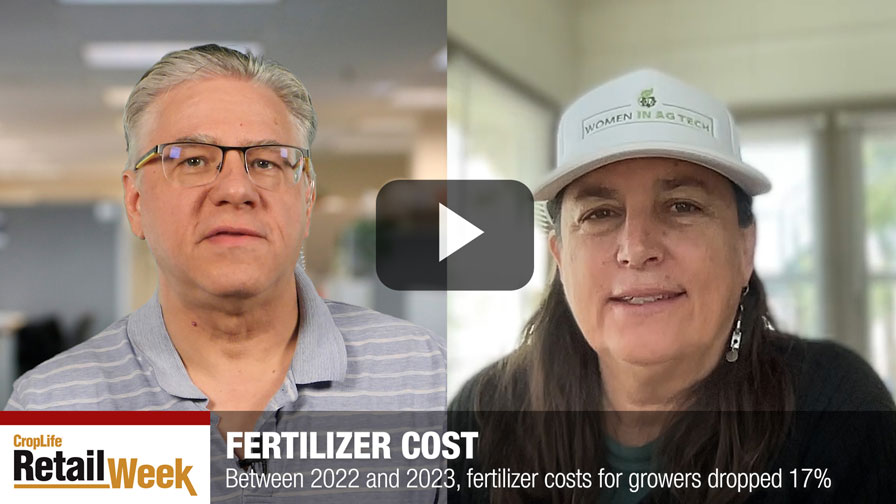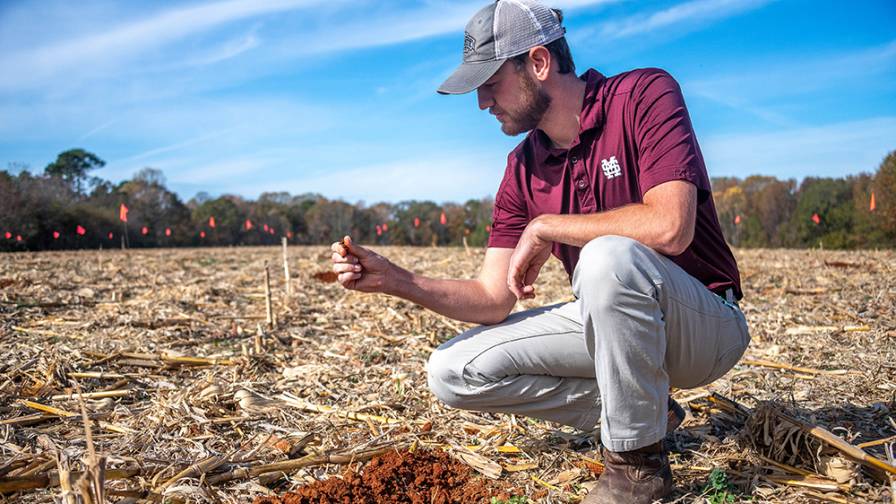CropLife 100: Singing All The Way To The Bank
The final numbers have been tallied for the CropLife 100 retailers in 2011 and it’s safe to say that there has never been a year like 2011. According to the data from the nation’s top dealerships and cooperatives, revenues during this year were the highest on record in the 28-year history of our magazine’s annual rankings of the 100 biggest retail operations. If you were to use a popular song to describe the year, the tune might very well be “Don’t Worry, Be Happy” or, stepping back a bit further into musical history, “We’re In The Money.”
Of course, this didn’t look like it would be the case earlier in the year. Back then, the tune many retailers were singing would have been “Rainy Days and Mondays” by the Carpenters. During the spring, several key crop states such as Indiana and Ohio experienced some of their wettest months in their respective histories. Flooding was also rampant in states such as South Dakota, Nebraska and Missouri, overrunning several crop fields in the process. This severely hampered the efforts by many retailers and grower-customers to do their spring fertility and application work, not to mention even thinking about getting some seed into the very saturated ground in a timely fashion.
Just how bad was the situation? When CropLife magazine visited the Crop Production Services (CPS) facility in Washington Court House, OH, back in early May, the outlet’s manager said that less than 10% of his grower-customers who planned to plant corn had been able to get their seeds into the fields. “I got to tell you, I was really struggling to put a smile on my face when you talked with me back then,” says Steve Mossbarger, facility manager for CPS Washington Court House. “Based upon what was happening, or not happening, in our fields, I was thinking 2011 could be an awful year for us and everyone else in the ag retail business.”
Let The Sunshine In
Luckily for everyone in agriculture, things ended up being just fine. Once the clouds finally parted in late May and sunny days began in early June, ag retailers and their grower-customers were up to the task of getting fields prepped and planted. Ultimately, says Mossbarger, the corn and soybean crops around his area saw yields that were in line with historic norms. “We probably had 65 to 70 bushels per acre in our soybeans and somewhere around 175 to 204 bushels per acre for corn,” he says. “So with the crop prices as high as they are right now, no one is complaining.”
And this has indeed been the case. Based upon the numbers of the 2011 CropLife 100 retailers survey, the song most dealerships and cooperatives are singing is “Let The Good Times Roll” by The Cars. For the year, according to the data, the nation’s top ag retail operations had revenues of $24.2 billion in 2011, up an astonishing 17% from the $20.6 billion they pulled in during 2010. To put into perspective how this ranks in the world of business profits for the year, Apple — the maker of such flying-off-the-shelf products as the iPhone and the iPad — had overall sales of approximately $100 billion in the past year. This year, CropLife 100 retailers recorded one-quarter of that amount in sales.
Want a little better perspective from within the industry? There are now six companies within the CropLife 100 with annual sales in excess of $1 billion. Furthermore, almost one-third of retailers within the list (31) have revenues that top $100 million.
Then consider just how hard it has become for an ag retail operation to even make the CropLife 100 listing. Not too many years ago (back in the early 2000s, to be exact), ag retailers with $10 million in annual sales could be confident that they would land somewhere in the high 80s to low 90s on the CropLife 100 ranking. But for 2011, however, $10 million in annual sales wouldn’t even make the CropLife 100. Nowadays, for a company to be counted among the nation’s top retailers, it will take annual sales in the $12 million range. In other words, unless your company has approximately $1 million per month in sales, you won’t make the list.
Celebration
So now that we’ve set the table for how the overall market performed in 2011, let’s take a closer look at the crop inputs and services that made a $24 billion-plus year possible. Just as a reminder, the revenue reflected in the CropLife 100 listing comes from four sources – fertilizer, crop protection products, seed and custom application. Typically, during a normal year, some of these will be up while others will be down. On some rare occasions, three of these categories will experience sales increases from one year to the next. A few times, back in 2005, 2007 and 2010, all four categories saw market growth from the prior year.
Now make that two years in a row of a clean sweep winning streak. In 2011, all four categories saw their sales figures move upwards from their 2010 totals. And in all cases, these figures represented record highs for each.
Of course, not all categories grew at an equal pace, so there were some pretty significant market share shifts that took place in 2011. As for the crop input category that was singing the song “All-Star” by Blue’s Traveler, that would be fertilizer. During the mid-2000s, the fertilizer category finally surpassed the crop protection products sector to become the industry’s leading sales driver. By 2008, market share for fertilizer hit the 50% mark and it seemed as if more sales growth was just around the corner.
Then came mid-2008, and its infamous crash in crop and fertilizer prices. The effects from this weren’t readily evident in the 2008 CropLife 100 survey, but were felt in 2009. For that year, fertilizer sales were $9.2 billion, down from $10 billion the year before and market share for the category dropped back below the 50% mark – and stayed there during the 2010 survey.
However, in 2011, it’s safe to say that fertilizer is back and stronger than ever. According to CropLife 100 retailers, their fertilizer sales in 2011 topped $12.7 billion, up 26% from 2010. Better still, the market share for the fertilizer category now stands at a record 53%, up 4% from 2010. If fertilizer is able to maintain this kind of growth, it won’t be long before the category is approaching the 60% market share mark.
With fertilizer gobbling up four extra market share percentages, the second largest crop input category, crop protection products, suffered the most. Here, while overall sales did increase 8% to $7.1 billion, the market share tune was “Free Falling” by Tom Petty. Since the beginning of the 2000s, when the crop protection products category held a market share figure in the high 40% range, the sector’s year-over-year share has steadily dropped (see p. 17 for more details on this 10-year trend). In 2011, the overall market share for the crop protection products category stands at just 29%, down 3% from 2010 to a historic low.
If there was a category that could sing the song “Baby, What A Big Surprise” by Chicago in 2011, it was seed. Since the start of the 21st century, the seed category has been a very steady upward growth curve. From a market share low of 8% at the start of the century, the seed category has regularly grown year-after-year according to our CropLife 100 data. In 2010, market share for seed stood at 15%.
But this changed in 2011. For the year, revenue remained strong. According to CropLife 100 retailers, seed sales topped $3.4 billion in 2011, up 13% from 2010. However, since this rate of growth didn’t match that of the fertilizer category (or the overall market), seed actually lost 1% market share in 2011, now standing at 14%.
So does this represent a new downward trend for seed or was 2011 just a temporary pause on the growth curve path? Most retailers believe the latter view is correct. “You are seeing the effects of the seed saturation that is out in the market,” says Tim McArdle, vice president and chief operating officer for Brandt Consolidated, Springfield, IL. “Seed is continuing to grow and that isn’t stopping. The category was simply outpaced by fertilizer during 2011.”
As for the last category in 2011, custom application, “The Song Remains The Same.” Overall sales for this category were up slightly to $885 million and market share held steady at 4%.
What A Wonderful World
If there was a major difference between 2010 and 2011 CropLife 100 report, it comes from the sub-categories tracked by the survey. There are nine of these, ranging alphabetically from adjuvants to precision ag services. In 2010, CropLife 100 survey reported that six of these nine increased in value year-over-year for more than half of respondents. This was led by a high of 77% of retailers seeing sales gains of 1% to more than 5% for seed treatment to a low of 27% recording sales gains for traditional seed.
In 2011, the percentages were much higher across the board. This year, eight of the nine sub-categories had sales increases ranging from 1% to more than 5% for CropLife 100 retailers, led by fertilizer at 87% and micronutrients at 83%. In fact, the only sub-category not to have better than 50% of respondents gaining revenues during 2011 was traditional seed, which was up for only 25% of those polled.
Let’s Get Together
With virtually every company within the CropLife 100 increasing their sales performance during 2011, it’s not surprising that few retailers felt “the urge to merge” during the year. However, there were a few. For example, just as our magazine was putting its 2010 CropLife 100 issue to bed, we got word that long-time family-owned 2010 CropLife 100 No. 19 Miles Farm Supply had agreed to be acquired by No. 1 Agrium Retail, adding 19 locations in Ohio and Kentucky and some $120 million in revenue to the latter’s bottom line. Earlier this summer, 2010 CropLife 100 No. 74 Grainland Cooperative became part of the CHS Inc. family of outlets.
In addition, 2010 CropLife 100 No. 36 Landmark Services Cooperative and No. 83 Cooperative Plus joined forces at the end of summer, boosting the brand new Landmark into the $100-million club for the first time. And at presstime, this year’s CropLife 100 No. 34 United Cooperative announced plans to acquire a neighboring retailer, which should place it squarely in the $100 million grouping for the 2012 CropLife 100 listing.
So now that 2011 has turned into such a fantastic year for ag retailers, will 2012 be more of the same? For CropLife 100 retailers, that is the multi-billion dollar question. Right now, however, most of them are optimistic, humming the tune “Don’t Stop Believing” by Journey. “Right now, I don’t see anything on the horizon that could mean trouble for 2012, except maybe some really terrible weather that never quits,” says CPS’ Mossbarger. “Of course, I’m a pessimist, so something could turn up that I haven’t anticipated. But I feel pretty confident right now.”






